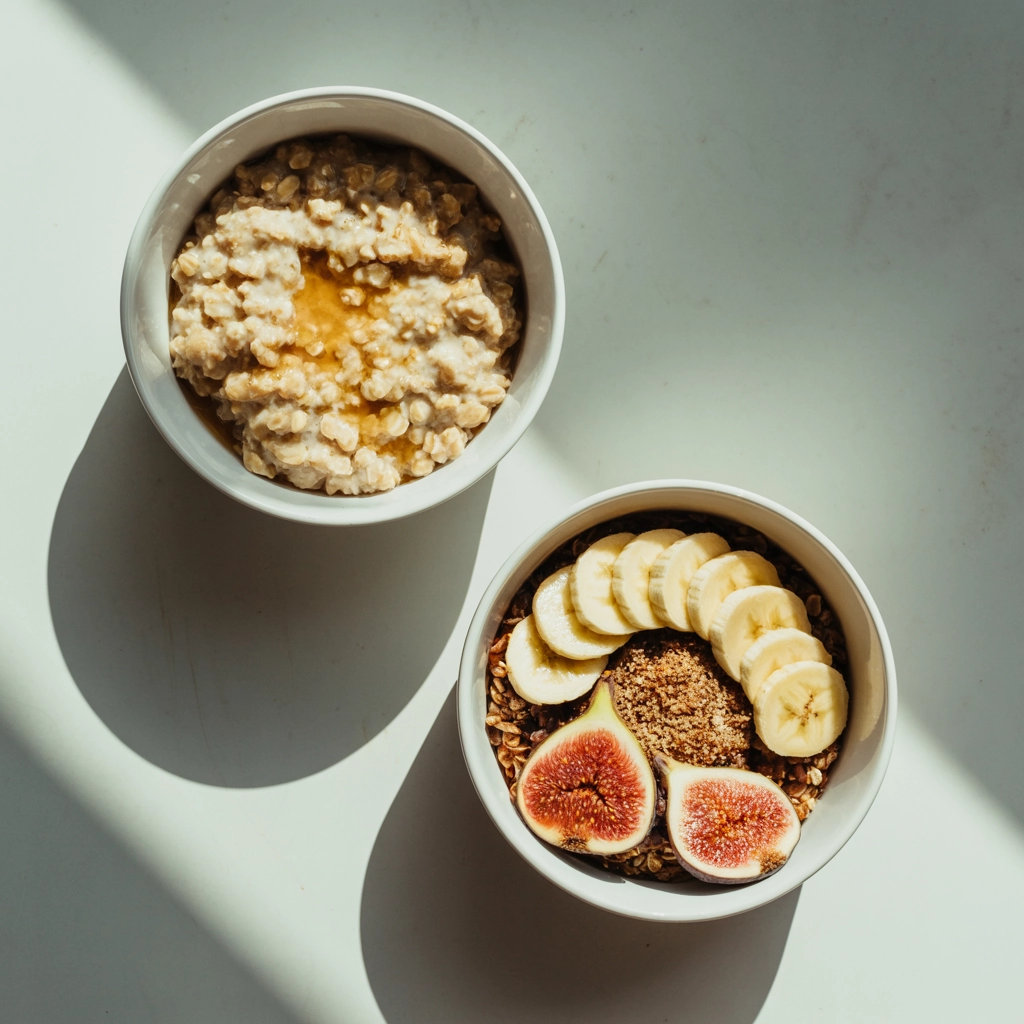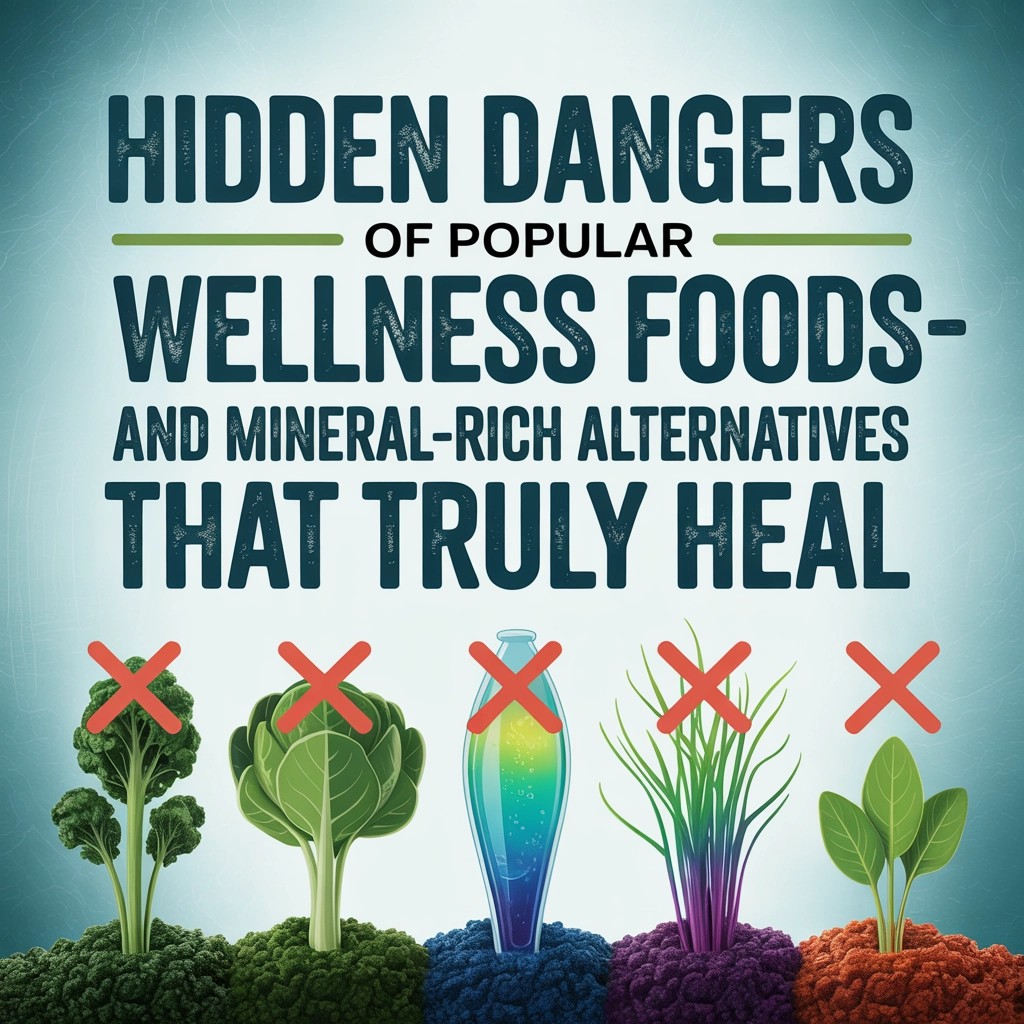Your cart is currently empty!
Hidden Dangers of Popular Wellness Foods—and Mineral-Rich Alternatives That Truly Heal

The Truth Behind Your “Health” Foods
Hidden Dangers of Popular Wellness Foods—and Mineral-Rich Alternatives That Truly Heal. This is what we’re discussing on today’s topic. Walk into any health store, scroll through your favorite wellness feed, or talk to a traditional health coach, and you’ll likely hear glowing recommendations for foods like turmeric, honey, and brown rice. These ingredients have been elevated to superfood status, with countless articles praising their healing properties.
But what if I told you that some of these celebrated superfoods might actually be working against your body’s natural healing processes?
As we’ve discovered through years of research at Alkaline Eclectic Herbs, not all “healthy” foods deserve their halos. Today, I’m pulling back the curtain on 5 popular wellness foods that may be silently undermining your health goals—and sharing the mineral-rich, bioavailable alternatives that truly support your body’s natural healing abilities.
1. The Turmeric Trap
Why It’s Often Recommended
Turmeric has become the golden child of the wellness world—literally. This vibrant yellow spice is praised for its anti-inflammatory properties and antioxidant content. You’ll find it in everything from golden milk lattes to supplement capsules, with claims ranging from pain relief to cancer prevention.
The Hidden Problem
While turmeric does contain curcumin (the compound responsible for many of its touted benefits), what most wellness influencers won’t tell you is that a Harvard study linked turmeric to oxalate buildup in the body. These oxalates can lead to kidney stones and create significant renal stress over time.
“Many natural substances that help one system can silently harm another. This is especially true with turmeric, where the anti-inflammatory benefits come with metabolic costs that few consider.” – Dr. Thomas Easley, Clinical Herbalist
In other words, what appears to help inflammation in one part of the body may be quietly damaging another crucial system—your kidneys.
Better Alternatives
Instead of reaching for turmeric, consider these truly healing alternatives:
- Soursop Leaf: Naturally anti-inflammatory and supportive of digestion and immune health without compromising kidney function.
- Kalawalla: A powerful adaptogenic herb that reduces inflammation and balances immune response gently and effectively.
Both options provide similar benefits to turmeric without the oxalate burden, making them smarter choices for long-term wellness.

2. The Garlic Guise
Why It’s Often Recommended
Garlic has been used medicinally for centuries and is widely touted as an immune booster and antimicrobial powerhouse. You’ll hear recommendations to consume it raw at the first sign of illness or incorporate it regularly into your meals for heart health.
The Hidden Problem
While garlic does have antimicrobial properties, there’s a critical distinction few health experts make: garlic contains compounds that irritate the mucus membrane and can kill both harmful and beneficial cells indiscriminately.
This scorched-earth approach disrupts the delicate balance of gut flora and interferes with proper immune communication. The volatile nature of garlic makes it more of a stimulant than a healer—offering temporary relief while potentially creating longer-term imbalances.
Better Alternatives
For true immune and antimicrobial support without the collateral damage:
- Burdock Root: Strengthens the immune system without disrupting internal balance, with additional liver-supporting benefits.
- Elderberry: Offers targeted antimicrobial protection and antioxidant support without harming beneficial bacteria or irritating sensitive tissues.
These herbs work with your body’s intelligence rather than overriding its natural processes.
3. The Honey Hoax
Why It’s Often Recommended
Honey is marketed as nature’s perfect sweetener—rich in enzymes, antioxidants, and antimicrobial properties. It’s recommended for everything from soothing sore throats to enhancing athletic performance.
The Hidden Problem
The golden sweetener has a darker side that’s rarely discussed. Most commercial honey comes from hybrid bees, which produce nutritionally inferior honey compared to their wild counterparts. Even more concerning, recent studies have shown aluminum levels in bees are 70 times higher than the levels known to trigger Alzheimer’s in humans—and these heavy metals end up in the honey we consume.
Beyond the contamination concerns, honey can spike blood sugar levels and potentially inflame the gut lining, especially in people with existing digestive sensitivities.
Better Alternatives
When you need natural sweetness, opt for these truly healing options:
- Date Sugar or Fresh Dates: Naturally sweet, mineral-rich, and gentle on the digestive system.
- Blended Ripe Fruit: Use bananas, figs, or mangoes in smoothies, teas, or sauces for natural sweetness without the inflammatory response.
These alternatives provide sweetness along with fiber and nutrients that support, rather than compromise, your health.

4. The Apple Cider Vinegar Illusion
Why It’s Often Recommended
Apple cider vinegar (ACV) has achieved almost cult-like status in the wellness community. It’s promoted for everything from gut health and weight loss to blood sugar regulation and detoxification. The “mother” (the cloudy substance in raw, unfiltered ACV) is said to contain beneficial probiotics and enzymes.
The Hidden Problem
What most ACV enthusiasts don’t realize is that its intense acidity can erode tooth enamel, damage the gut lining, and weaken the protective mucus membrane that lines your digestive organs. Long-term use can actually disrupt digestion instead of improving it, creating an acidic environment that forces your body to pull minerals from bones and tissues to maintain proper pH balance.
“The problem isn’t that apple cider vinegar has no benefits—it’s that the potential long-term damage to digestive tissues outweighs the short-term advantages for most people.” – Alkaline Eclectic Herbs Research Team

Better Alternatives
For gentle digestive support without the acid damage:
- Key Lime Water: Gently alkalizes the body, supports digestion, and protects tissue health while providing vitamin C.
- Cucumber Juice or Infused Water: Naturally hydrating and soothing for the gut lining, with mild detoxification properties that don’t disrupt your body’s natural balance.
These alternatives provide similar benefits with none of the drawbacks, making them superior choices for daily use.

5. The Oat Outrage
Oats have long been promoted as a heart-healthy breakfast choice for their fiber content, slow-digesting carbs, and potential cholesterol-lowering effects.
The Hidden Problem:
What most nutritionists don’t mention is that oats are high in lecithins, compounds that can disrupt the digestive system over time. Modern oats are also prone to mold and bacteria contamination during processing.
Perhaps most concerning is the agricultural reality: commercial oats typically require glyphosate-based pesticides during production. These toxins can linger in the final product, potentially damaging the liver, gut, and immune system with regular consumption.
Better Alternatives:
For morning meals that truly nourish:
Green Burro Banana or Banana Porridge — Nutrient-dense, naturally alkaline, and mucus-friendly, these starchy fruits provide sustainable energy without the inflammatory drawbacks.
Teff or Amaranth Porridge — These ancient grains are gentle on the gut, rich in minerals, and free from hybridization or toxic pesticide requirements.
For truly nourishing grain options:
- Fonio: A mineral-rich, non-hybrid ancient grain that’s light, easy to digest, and satisfying without the digestive burden.
- Wild Rice: Provides clean energy with alkalizing properties and gut-friendly starch that doesn’t create the same mucus-forming reactions as Oats.
These ancient grains provide sustainable energy without compromising digestive health or mineral absorption.
The Healing Alternative Approach
When we step back and look at these popular “health” foods collectively, a pattern emerges. Many of today’s celebrated superfoods have become normalized despite evidence showing their long-term effects can be draining, disruptive, and even dangerous to our bodies.
The solution isn’t complicated, but it does require us to rethink what we’ve been taught about nutrition. The answer lies in using nature’s original blueprint—focusing on mineral-rich, non-hybrid, mucus-friendly plant foods that support the body’s electrical functions and natural healing capabilities.

Making the Switch: Your Action Plan
Ready to transition from problematic “health” foods to truly healing alternatives? Here’s a simple approach:
- Start with one swap per week: Begin by replacing just one problematic food with its healing alternative. This makes the transition sustainable and allows you to notice how your body responds.
- Listen to your body: After making a swap, pay attention to how you feel. Increased energy, better digestion, clearer thinking, and improved sleep are all signs you’re moving in the right direction.
- Educate yourself: The more you understand about how foods affect your body at the cellular level, the easier it becomes to make choices that support true healing. Our free nutritional guide is a great place to start.
- Focus on addition, not deprivation: Instead of dwelling on what you’re removing, get excited about the new healing foods you’re introducing. Experiment with recipes and preparation methods to find what you truly enjoy.
- Be patient with the process: True healing isn’t an overnight transformation. Your body may need time to adjust and reset as you introduce more bioavailable, mineral-rich foods.
Final Thoughts
Just because something is marketed as “healthy” doesn’t mean it’s harmless. Many popular health foods have become normalized despite evidence showing their long-term effects can compromise our wellbeing.
The solution? Use nature’s blueprint. Stick with mineral-rich, non-hybrid, mucus-friendly plant foods from the Nutritional Guide of Least Detrimental Foods—and let your body experience the difference.
Your body has an innate intelligence and remarkable healing capabilities. When you provide it with truly compatible foods, you remove obstacles to healing and create the conditions for optimal wellness to emerge naturally.
Ready to dive deeper into true cellular healing through alkaline, bioelectrical nutrition? Explore our herbal blends, teas, and protocols designed to help you reset, rebuild, and heal at the deepest level.
Your journey to true wellness begins with recognizing the difference between marketed “health” foods and truly healing ones. Your body deserves the real thing.
Whenever you’re ready, here are 3 ways I can help:
#1 Join my Cooking Community
#2 Download a free copy of the Nutritional Guide PDF
#3 Click here to schedule a 1 on 1

